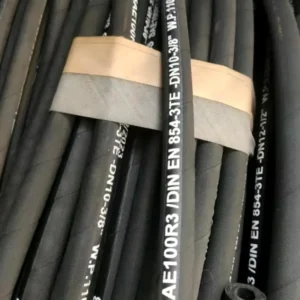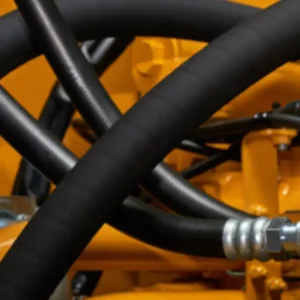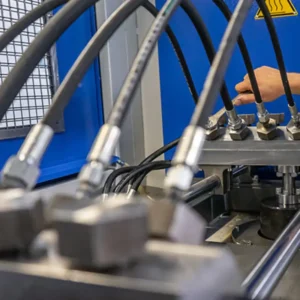When we talk about Agricultural Hydraulics, the conversation often centers on powerful pumps, sophisticated sprinklers, or precision drip emitters. But we’ve learned that these complex systems are only as good as their most fundamental component: the hose. It’s the circulatory system of your entire operation, and its quality dictates everything from water flow efficiency to system reliability.
What is Hydraulic Agriculture?

Hydraulic agriculture refers to the use of fluid power to operate machinery and manage water systems on a farm. This technology is essential for modern farming, enabling farmers to perform tasks with greater force, precision, and efficiency.
Key applications of hydraulics include:
- Machinery: Hydraulic systems power the steering, lifting, and control of heavy equipment like tractors, harvesters, and loaders.
- Irrigation: They control valves and actuators in irrigation systems to precisely manage water flow, conserving resources and ensuring crops receive the right amount of water.
- Material Handling: Hydraulics are used in conveyors and forklifts for the efficient handling of crops and other materials.
In essence, hydraulic agriculture uses the power of pressurized fluids to automate complex tasks, reduce manual labor, and boost overall productivity.
The Power of Hydraulics in Agriculture
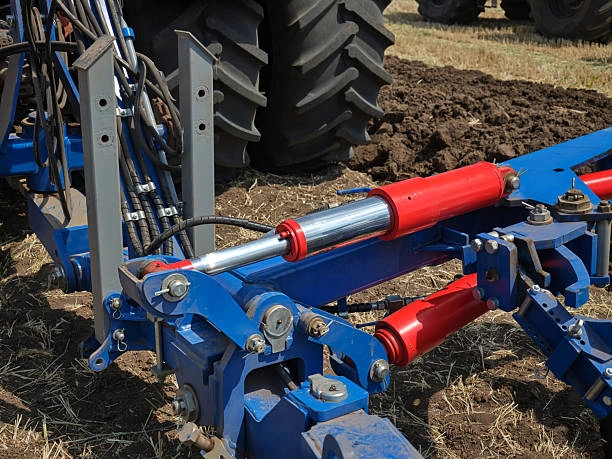
Modern agriculture is a marvel of engineering, and at its heart lies hydraulics. This powerful technology, which uses pressurized fluids to create mechanical force, is the silent engine that drives efficiency, precision, and productivity on today’s farms. Without it, many of the tasks we now consider standard would be impossible.
The power of hydraulics is most visible in heavy machinery. It provides the immense lifting force for tractor loaders, the fine-tuned control for combine harvesters, and the robust steering in large farming vehicles. Hydraulic systems allow farmers to raise and lower plows, adjust the depth of seed planters, and operate a variety of heavy-duty attachments with the push of a button or the flick of a lever.
Beyond brute force, hydraulics offers incredible precision. It enables the nuanced control needed for modern equipment, ensuring seeds are planted at the perfect depth and spacing, or that harvesters can be precisely adjusted to minimize crop damage.
In a broader sense, hydraulics is also crucial for water management. It’s used in large-scale irrigation systems to control valves, gates, and pumps, allowing for the precise distribution of water to fields. This controlled application of water helps conserve a vital resource and ensures crops get exactly what they need to thrive.
Hydraulics is the backbone of modern farming, transforming manual labor into automated, powerful, and precise operations. It’s what allows today’s farmers to feed a growing world with unprecedented efficiency.
Hydraulic Hoses for Agricultural Hydraulics
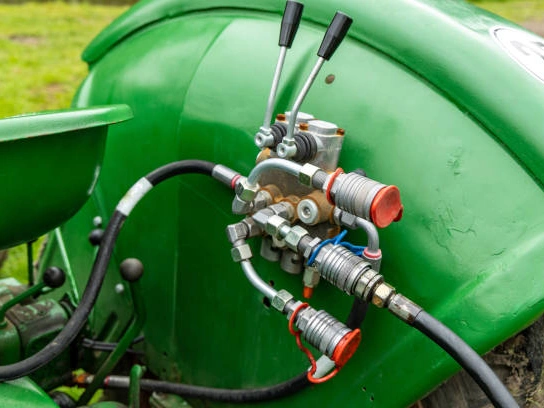
Hydraulic hoses are the lifelines of any modern farm’s hydraulic system, serving as the critical conduit for transmitting pressurized fluid. In the world of agricultural hydraulics, these hoses are subjected to extreme conditions, making their quality and reliability paramount. They are responsible for transferring hydraulic fluid—the very power that lifts loaders, steers tractors, and operates complex machinery—from the pump to the actuators.
The unforgiving nature of farming environments demands exceptionally tough hoses. A quality hydraulic hose for agricultural use must withstand immense internal pressures while simultaneously resisting external threats like abrasion from dirt and rocks, exposure to harsh UV rays, and extreme temperature fluctuations. A hose failure is not just an inconvenience; it can lead to dangerous situations and cause costly downtime during critical planting or harvesting seasons.
Selecting the right hydraulic hose is a non-negotiable investment in safety and productivity. A high-quality hose, featuring durable reinforced rubber and robust fittings, ensures a secure, leak-free connection. It’s engineered to endure the rigors of daily farm work, providing consistent performance and extending the life of valuable equipment. Ultimately, the performance of an entire hydraulic system is only as strong as its weakest link, and a reliable hose ensures that power is delivered where it’s needed, when it’s needed.
What Types of Hydraulic Hoses Can be Used for Agricultural Hydraulics?
For agricultural hydraulics, the choice of hose is critical and typically falls into three main categories, each designed to handle specific tasks and conditions. The most common type is rubber hydraulic hose, which is the workhorse of the industry. These hoses are highly durable, flexible, and feature a robust synthetic rubber inner tube and outer cover. They are reinforced with layers of braided or spiraled steel wire, which allows them to withstand the immense internal pressures required for lifting heavy farm implements and operating machinery. Many of these hoses meet SAE standards like SAE 100R1 and 100R2, ensuring they can handle the demanding conditions of farm life.
Thermoplastic hoses are also gaining popularity. Made from synthetic materials like polyurethane, they are a great alternative where weight and a smaller bending radius are key concerns. They are lighter than their rubber counterparts, offer excellent resistance to chemicals and kinking, and are often used for medium- to high-pressure applications, such as on sprayer booms. Some thermoplastic hoses are also non-conductive, which is a vital safety feature for equipment operating near power lines.
For water transfer and irrigation, lay-flat hoses are widely used. These hoses are designed to be collapsible when not in use, making them easy to roll up, transport, and store. They are typically made from PVC or TPU and are ideal for low- to medium-pressure applications, such as moving water from a pump to a field.
Selecting the correct hose type for a specific application ensures both safety and optimal performance.
Conclusion
When you invest in high-quality hoses, you’re not just buying a component; you’re investing in the reliability, efficiency, and longevity of your entire agricultural hydraulics system. It’s a proactive step that minimizes risk and maximizes your potential for a successful harvest. Don’t let a minor part be the weakest link in your operation. Prioritize quality, and your equipment—and your farm—will thank you for it.
What’s the biggest hose-related challenge you’ve faced on your farm? Let’s discuss it in the comments below!

